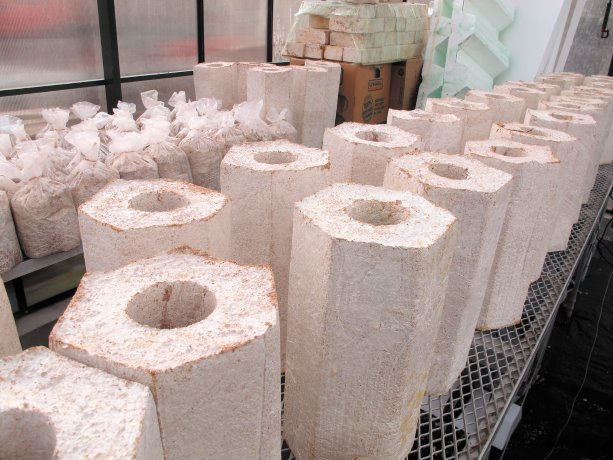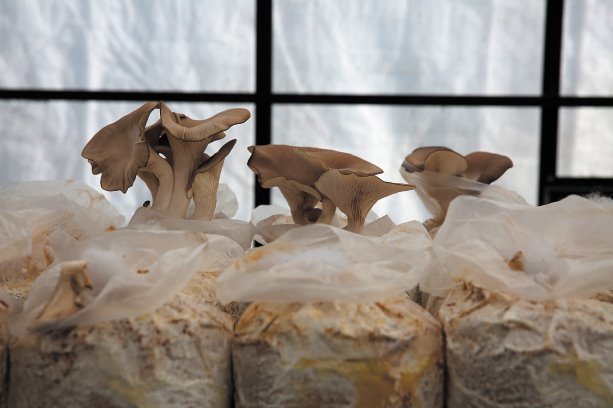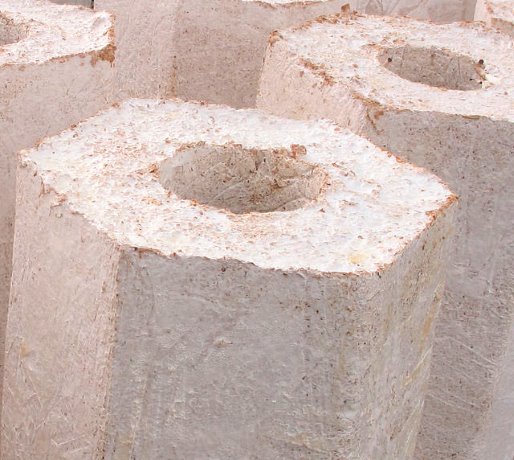Make room for the mushroom. According to the work of a team of researchers at the University of British Columbia (UBC), the fungus is ready to leave the kitchen and take up a role as a building material.
In an innovative design project, six new benches have been installed outside the UBC bookstore.
Assembled from light-coloured honeycomb-shaped bricks under a top coat of clear acrylic, the seats are more than a spot where students can relax — they’re also very much alive, grown from a blend of oyster mushroom spores and alder sawdust packed into moulds.
The roots of the project stretch back to 2014.
Joe Dahmen, assistant professor at the UBC School of Architecture and Landscape Architecture, and his partner in work and life Amber Frid-Jimenez, who is also the Canada research chair in design and technology at the Emily Carr University of Art and Design, were expecting their second child.
They had been working on an architectural installation fabricated of recycled polystyrene blocks when they decided to explore more eco-friendly options.
"Amber couldn’t get near the thing because it was so toxic," Dahmen recalled, touring the greenhouse where the benches were grown. "It got me thinking that there must be a more natural material that would still enable a similar range of expression."
In their search for an alternative, Dahmen and Frid-Jimenez discovered the world of mycelium biocomposites, an emerging field where mushroom roots, or mycelium, grow in loose cellulosic material such as sawdust.
The results are durable materials with attributes similar to that of polystyrene foams. Although a U.S. company recently signed a contract to provide Ikea with mycelium-based packaging, the method had yet to be done in Canada.
Through UBC’s social ecological economic development studies (SEEDS) sustainability program, Dahmen and Frid-Jimenez worked with university students and staff to develop a scalable method of producing mycelium biocomposites using two local materials: oyster mushroom spores and alder sawdust.
To address the size limitation of the material — mycelium biocomposites risk contamination by mold and bacteria if they exceed a half-metre in thickness — Dahmen developed a new process that drew inspiration from a wasps nest discovered in the empty greenhouse that would house the project.
"I was really amazed at the honeycomb structure, because it’s a highly efficient way of occupying space," he said, holding a piece of the nest to display its dense grid of hexagonal chambers.
"It’s scalable, it can go in any direction, and it’s extremely spatially efficient."

1/2
Researchers at the University of British Columbia are exploring the use of mushrooms in building insulation. The team has already constructed furniture that is on display at the university’s campus.
Photo: UBC











Recent Comments
comments for this post are closed